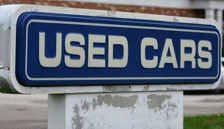A stream of business sales and retirements started prior to the expiry of the Motor Vehicle Block Exemption Regulation in June 2013. Several owners sought to exit and bank their retirement funds while they could still sell their franchises to anyone, before the manufacturer became legally empowered to veto any disposal.
Two years later, that stream has continued to flow, as the market conditions remain favourable thanks to ambitious dealer groups and improving property values. Automotive advisers from ASE Global and UHY Hacker Young report that they currently have more than a dozen clients between them seeking a sale and exit from their business.
“From a seller’s point of view, we’ve had a couple of years of record profitability, so the numbers they are able to sell the business off the back of are strong and there are a lot of brands now looking at expansion and CI spend, so it’s a natural break for some dealers to consider their future,” said Mike Jones, chairman of ASE Global.
From the buy side, dealers have been making record profits in the past two years and have money to spend on buying dealerships.
Jones said: “There’s very little alternative on what to do with their cash, as leaving it in the bank isn’t going to be a good investment.”
The number of listed motor retailers is also increasing and their shareholders don’t give them money to have it sitting in the bank – they need to be investing in the business and improving profitability.
UK motor retail is being viewed positively by investors after more than 36 months of consecutive growth in new car registrations. Jones said this is driving an increase in interest from foreign investors, which he believes will continue. One driver of this will be encouragement from the manufacturers, given that the entry costs for some franchises may preclude many domestic new entrants.
Although the rapid growth potential may not be as readily available in the mature UK market as in emerging markets, that rapid growth can pose a greater risk – one example being Russia’s car market, now struggling after strong growth for five years. Jones said foreign investors view the UK as a stable market, with good best practices and good operators, and the common language offers further appeal to investors from the US, Australia and South Africa.
“We have a few overseas clients actively looking to acquire businesses in the UK, albeit sometimes with strict mandates on what they’re looking for,” Jones said. “People from overseas see it as a secure investment, and there is scope to grow once they’re here.”
So what should an owner-operator do if they want to cash in their chips while the market is hot?
Advisers agree they should have been planning their exit already, grooming their business for sale over the past three to five years. Unfortunately, some dealers don’t have this luxury if their manufacturer is rooting out under-performers or changing its network representation plan to a market area approach.
However, for those who do, a longer-term plan can get the business fit for sale and add substantial value. David Kendrick, partner in UHY Hacker Young’s automotive team, likens it to consumers decorating and tidying before putting their house on the market.
“You get one chance normally to take it to market. When you do, you want it in top condition to attract several bidders champing at the bit for it in order to achieve the best value. It’s always hard to drive value when there’s only one bidder.”
Early planning also provides the vendor an opportunity to plan their exit before facing the expense of introducing a new brand CI, which could mean committing to a further five years’ trading while they recoup that investment. The roll-out of a new CI is often preceded by the manufacturer conducting a review of its franchise network strategy, which could risk terminations for marginal points of representation or manufacturer pressure to sell to a specific dealer.
“In one case I handled earlier this year, the client didn’t necessarily want to sell as they wanted another five years until retirement, but they didn’t fancy spending £500,000 on a CI change, so they brought that retirement decision forward,” said Paul Daly, audit partner at UHY Hacker Young.
It can be a wise decision. A failure to properly plan an exit ahead of CI changes could result in a forced sale as the owner becomes desperate to sell, which will drive down the value.
An exit plan can allow a vendor to give some thought to potential bidders for their business and how the business can adapt to better suit them. One example could be the sale of a regional group, where the scale and cost of the transaction means the acquirer is likely to be a sizeable national group, where a key consideration could be the compatibility of its dealer management system or structure of its finance function.
A potential buyer, particularly from the AM100 groups, will want to see the selling business is “squeaky clean” with its tax history, from company car usage and PAYE to VAT. Any issues not in full order will mean the prospective acquirer can “chip” away at the price of the business.
The vendor can avoid the risk of chipping by preparing the business properly and engaging in clear, open discussion from day one. Once the deal has been verbally agreed, the non-legally binding heads of terms are put in place by the two parties’ advisers.
The heads of terms are a key negotiation point, setting out what’s included in the deal, the mechanism for valuing assets and stocks of used cars and parts, plus any freehold or leasehold property. It’s not legally binding, but it makes it clear to both parties what the deal consists of, so the legal advisers can agree a contract of sale.
Advisers for sellers may often require any offers to come with proposed heads of terms as the policies a seller may use to value the business can have an impact on the valuation.
Following that, if due diligence reveals any aspects that are not as they at first seemed, the buyer may use these to chip the price in further negotiations, or to withdraw its offer completely.
Daly said: “The large groups seeking to buy don’t like anything that is considered racy or aggressive from a tax point of view, such as the tax planning and avoidance schemes of a few years ago like EFRBS (employer financed retirement benefit schemes) which attracted some motor retailers to take money out.
“A history associated with such schemes makes the company harder to sell, because a plc won’t want to be associated with that if it all went wrong.”
In practice, many of the acquisitive motor retail groups don’t want to build a reputation for chipping and take a fair approach to the deal.
A final key point is the manufacturer’s attitude to the sale. Being open with the network development director about a plan to exit in the longer term may lead them to encourage bidders. While a manufacturer may have its own network plans and a preferred candidate, ultimately the dealer must be allowed to get a fair value from the sale and the more bidders, the better.
What is your dealer brand worth?
The manufacturer brand is the dominant force in 21st-century motor retailing. Nevertheless, a long-established, well-reputed dealer brand can still add its own goodwill to the deal. That may depend on the buyer, however. Most dealer groups have a tendency to rebrand in line with their existing operations and even smaller dealers may wish to rebrand their new additions, either immediately or in the medium term, to allow their marketing and reputation to benefit from economies of scale.
Vertu Motors departed from this when it acquired Farnell Land Rover from Co-Operative Motor Group in 2013, retaining the Farnell brand, which has been synonymous with Land Rover in West Yorkshire since 1948. Vertu has since built the Farnell brand further into a premium division as it has acquired more Land Rover and Jaguar dealerships.
For well-performing dealerships, the dealer brand may add significant value to avoid customers fearing the service levels and offers they have enjoyed will suffer.
Entrepreneur’s relief
Owner-drivers who are seeking to sell all or part of the business may benefit from a 10% entrepreneur’s capital gains tax rate on any gain from sale of shares and qualifying assets instead of the normal 28% rate paid by a higher rate taxpayer.
To qualify, the seller must have owned the business, or a minimum of 5% of its shares and voting rights, for at least one year before the date of sale. The shareholder must then leave the business.
ASE Global chairman Mike Jones said: “Entrepreneur’s relief is available to all entrepreneurs selling their business and it makes a massive difference from a take-home cash point of view.
“With the Conservative government in place, this is more likely to be enhanced than removed, although they are tightening down on the use of entrepreneur’s relief, after a few misuses of it, so making sure we’ve got the transaction right so our client can benefit from it is vitally important. Otherwise it could lose them an absolute fortune.”





















Login to comment
Comments
No comments have been made yet.